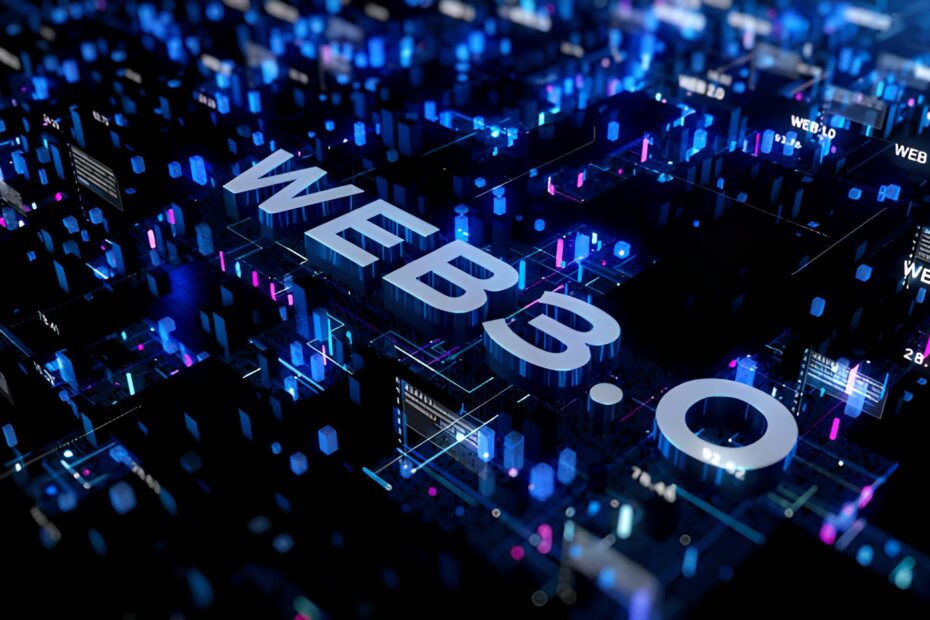A web page is a hypertext document on the World Wide Web. The web server sends web pages to a user, who views them in a web browser A website is made up of several websites linked together by a common domain name(DNS).
Here is a brief history of the Internet to help us start the discussion in this article:
- Web 1.0 is a read-only website where users can read content from a web page.
- Web 2.0 is a read-write web where users can both read and write content on websites and applications
- Web 3.0 is an interactive read-write (artificial intelligence-powered) web page in which users can read, write, and interact with the content of web pages and applications, including graphics 3D.
The growth of the Internet has been remarkable From Web 1.0, which mainly focused on static pages, Web 2.0 introduced new capabilities for social media domains and discussion forums, the latter allowing users to create and add content to websites. Everything on the Internet is now in the form of one giant database in its latest version, Web 3.0 And while this evolution presents tremendous scale and opportunity, it also brings with it equally serious cybersecurity risk challenges that Web 3.0 must address.
Web 3.0 and how it represents the next stage of the web’s evolution, with the potential to be as disruptive and represent a paradigm shift as Web 2.0 was, and in many ways still is.
Web 3.0 is based on the fundamental concepts of openness, and increased user utility. As more internet capabilities become part of Web 3.0 autonomous systems, organizations will be required to develop, migrate, and adopt blockchain, adaptive AI, and decentralized applications, despite the potential increase in risk and cybersecurity attacks.
Web 3.0 Is a combination of virtual reality (VR), augmented reality (AR), mixed reality (MR), gaming, cryptocurrencies, and social media
Our current web 2.0 systems and content processes will be gradually replaced, owing to searchability but also to privacy, data ownership, and security concerns.
Cyber Risks Of Web 3.0
While the vision for web 3.0 offers multiple opportunities for growth and development, it presents security concerns. A poorly defined web 3.0 can pose cybersecurity risks for a number of reasons.
- Reliability Of Information:
Exactly, Web 1.0 relies on publishers’ reputations. Web 2.0 has reduced data quality, increasing the effectiveness of misinformation on the Internet. Does the consensus in Web 3.0 to accept machine-managed data include accuracy checking? Who makes the decisions, what qualifications do they have and what motivates them to make decisions based on facts rather than pushing an agenda
- Data Manipulation:
Intentional manipulation of data used for AI training is a major cybersecurity concern. People can create bad data to get the desired results, making AI the world’s largest disinformation system
- Availability Of Web 3.0:
If our system relies on data, what happens when it doesn’t? Today’s internet is riddled with broken links The machines would have to make local copies of everything on the Internet or, as in Web 2.0, retrieve information on demand This can increase reliance on the availability of systems over which the IT team has no control
- Data Confidentiality:
Data breaches often cause significant damage to confidential information In addition, content may be inadvertently streamed or stored in an unsafe location The likelihood of private data being discovered and used increases dramatically as machines analyze the data and store it in their knowledge bases. Cybersecurity leaders must strengthen their defenses to prepare for a system capable of revealing confidential information faster than ever.
- Monetary Losses:
While blockchain technology is one of the most secure solutions available, hackers can gain unauthorized access to wallets and other digital assets through one or more vulnerabilities in encryption technology. And if a breach occurs, it is nearly impossible to recover lost funds or digital assets
As Web 3.0 takes shape, more cybersecurity issues may emerge However, it makes sense to consider security and privacy solutions in the first place. The future of the web without gatekeepers, with AI and meaningful content, is like a dream come true In order for this dream not to turn into a nightmare, it is necessary to set up security from the very beginning.
Reference:
Five cybersecurity risks of web 3.0, CIO News, ET CIO (indiatimes.com)
4 cybersecurity risks of web 3.0 | Security Magazine
For further clarifications or support, please write to contact@paradigmitcyber.com

